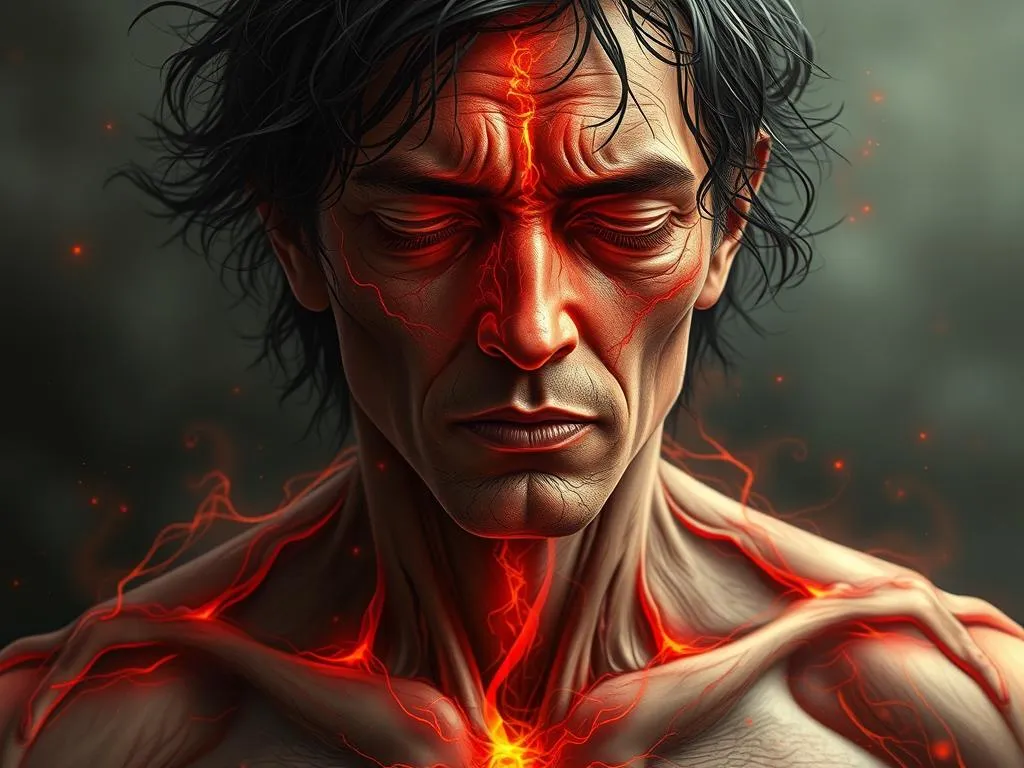
Understanding the pain in body spiritual meaning can open up a whole new world of awareness and healing. Often, we think of pain as just a physical issue to be treated with medicine or rest. However, many believe that pain can also carry a spiritual message, inviting us to explore our emotions, thoughts, and connections to ourselves and others. By delving into this spiritual perspective, we can begin to understand what our bodies are truly trying to tell us.
In this article, we’ll explore the spiritual meaning of pain in the body and how it can serve as a guide on your personal journey. You may find that your aches and discomforts are not just signs of physical strain but also reflections of deeper emotional or spiritual needs. Let’s unravel these messages together!
Key Takeaways
- Pain can be a spiritual message, urging you to pay attention to your emotional well-being.
- Different parts of the body may reflect specific emotional concerns or issues.
- Understanding your pain can lead to personal growth and healing.
- Mindfulness and self-reflection can help you connect with the spiritual meaning behind your pain.
Understanding Pain as a Spiritual Message
When we experience discomfort or pain, our first instinct is often to seek relief. However, what if that pain carries a deeper message? Many spiritual traditions suggest that pain in the body is not just a physical ailment, but also a signal from our soul or higher self. It could be a call to look within, examine our lives, and uncover any emotional blocks or unresolved issues.
For instance, chronic back pain could suggest feelings of insecurity or lack of support in your life. This part of your body might be telling you that you need to find stronger foundations in your personal or professional life. Recognizing the spiritual meaning behind pain in the body can be a transformative experience, encouraging you to address issues that may have been pushed aside.
The Mind-Body Connection
The connection between the mind and body is a vital aspect of understanding pain. Our thoughts, emotions, and experiences can manifest physically. When you feel stressed, anxious, or overwhelmed, your body may respond with tension, headaches, or other forms of pain. This connection highlights the importance of self-awareness and emotional regulation.
By practicing mindfulness and tuning into your thoughts and feelings, you may begin to recognize patterns that correlate with your physical discomfort. It’s like having a conversation with your body. Ask yourself: What emotions am I feeling when this pain arises? Is there a specific event or situation that triggers my discomfort? This self-inquiry can help illuminate the spiritual meaning of your pain.
Different Types of Pain and Their Spiritual Messages
Each type of pain in the body may carry a unique spiritual significance. For example, headaches often relate to mental stress, feeling overwhelmed, or struggling to communicate your thoughts effectively. The physical pain may indicate a need to slow down, clarify your thoughts, or express yourself better.
Similarly, pain in the heart area can symbolize emotional pain, grief, or unresolved issues in relationships. It may be an invitation to explore your feelings and address any emotional wounds. Consider what’s weighing on your heart. Are there relationships that need healing or conversations that need to be had?
Even physical injuries can have spiritual meanings. A broken ankle, for instance, can signify feeling stuck or unable to move forward in life. It could be a nudge to assess areas where you feel restricted or held back. Reflect on your current life situation. Are there aspects where you feel immobilized or uncertain?
The Role of Self-Reflection and Healing
Taking time for self-reflection is crucial when exploring the spiritual meaning of pain in the body. Journaling, meditation, or simply sitting in silence can help you connect with your inner self. During these moments, listen closely to your thoughts and feelings. You might uncover insights that lead to healing.
Moreover, consider seeking holistic healing practices. Techniques such as yoga, acupuncture, or Reiki can help align your body and spirit, promoting balance and relief from pain. These practices not only address physical symptoms but also encourage emotional release and spiritual growth.
Ask yourself: What will it take for me to heal fully? What steps can I take to nurture my body and spirit? Engaging with these questions can guide you toward a more profound understanding of your pain.
Embracing a Spiritual Perspective
Embracing the spiritual meaning of pain in the body allows you to shift your perspective on discomfort. Instead of viewing it purely as a negative experience, consider it an opportunity for growth and transformation. Each ache or pain can be a teacher, helping you learn more about yourself and your emotional landscape.
When you view pain through a spiritual lens, you empower yourself. You might find that you are not just a victim of your body but an active participant in your healing journey. This shift in mindset can lead to profound personal development and a deeper connection to your inner self.
Creating Space for Healing
Incorporating healing practices into your daily routine can help you better manage pain and promote overall wellness. Create a sacred space for yourself, where you can engage in activities that nurture your body and spirit. This could be a cozy corner in your home for meditation, a peaceful outdoor area for reflection, or a quiet room for yoga.
Consider integrating practices like deep breathing exercises, mindful movement, or even creative expression. These activities can help release stored emotions and alleviate physical tension. As you create this space, ask yourself: How can I honor my body and spirit today? What nurturing activities can I incorporate into my life?
Conclusion
Understanding the pain in body spiritual meaning can be a transformative journey for anyone seeking deeper insights into their physical and emotional well-being. By recognizing pain as a potential message from your body, you open the door to healing and personal growth.
As you explore your pain, remember to engage in self-reflection and nurturing practices. Embrace the opportunity to learn from your experiences and connect with your inner self. Your pain doesn’t have to define you; it can guide you toward a more profound understanding of who you are and what you need to thrive. So, the next time you feel discomfort, pause and listen. What message is your body trying to share with you?







